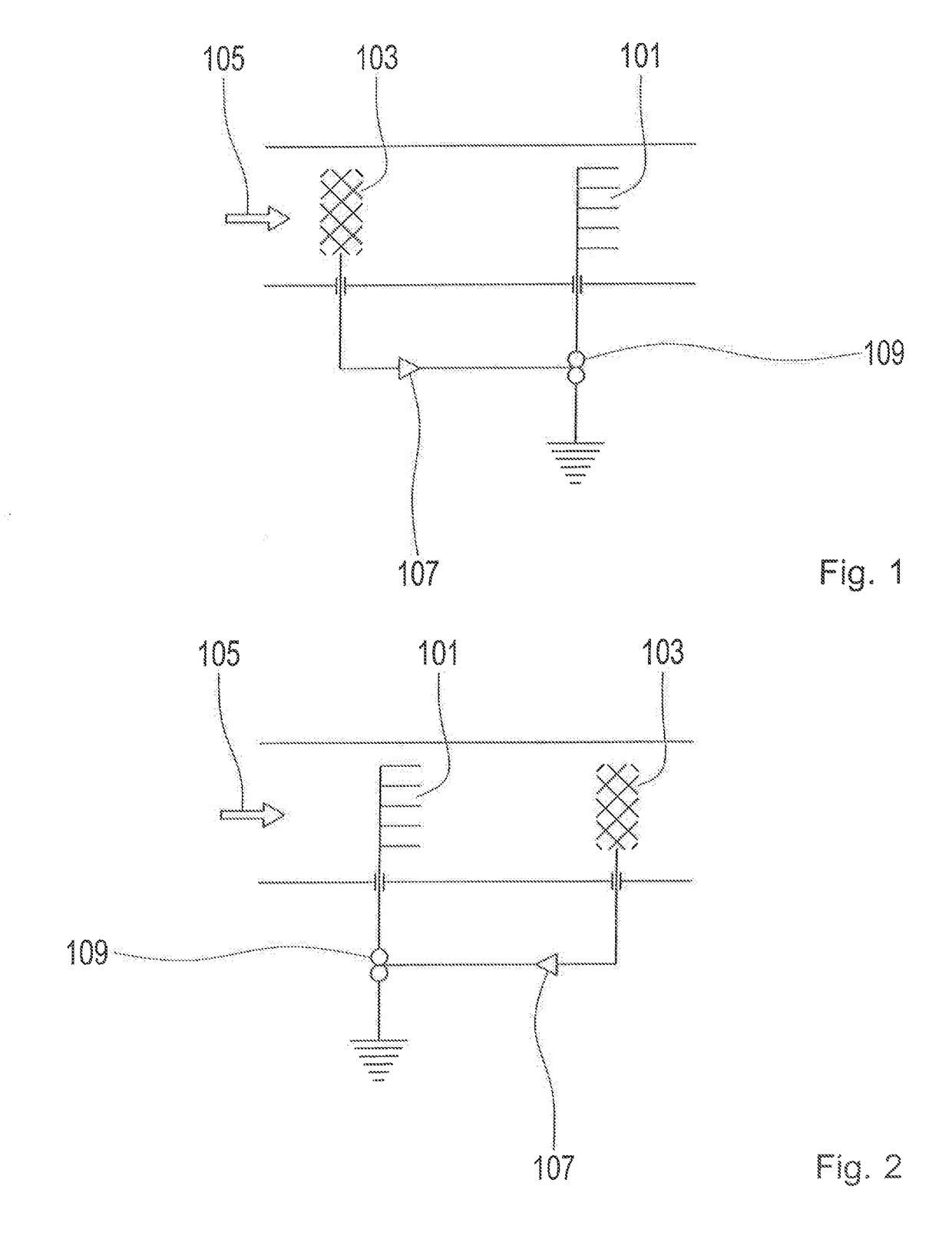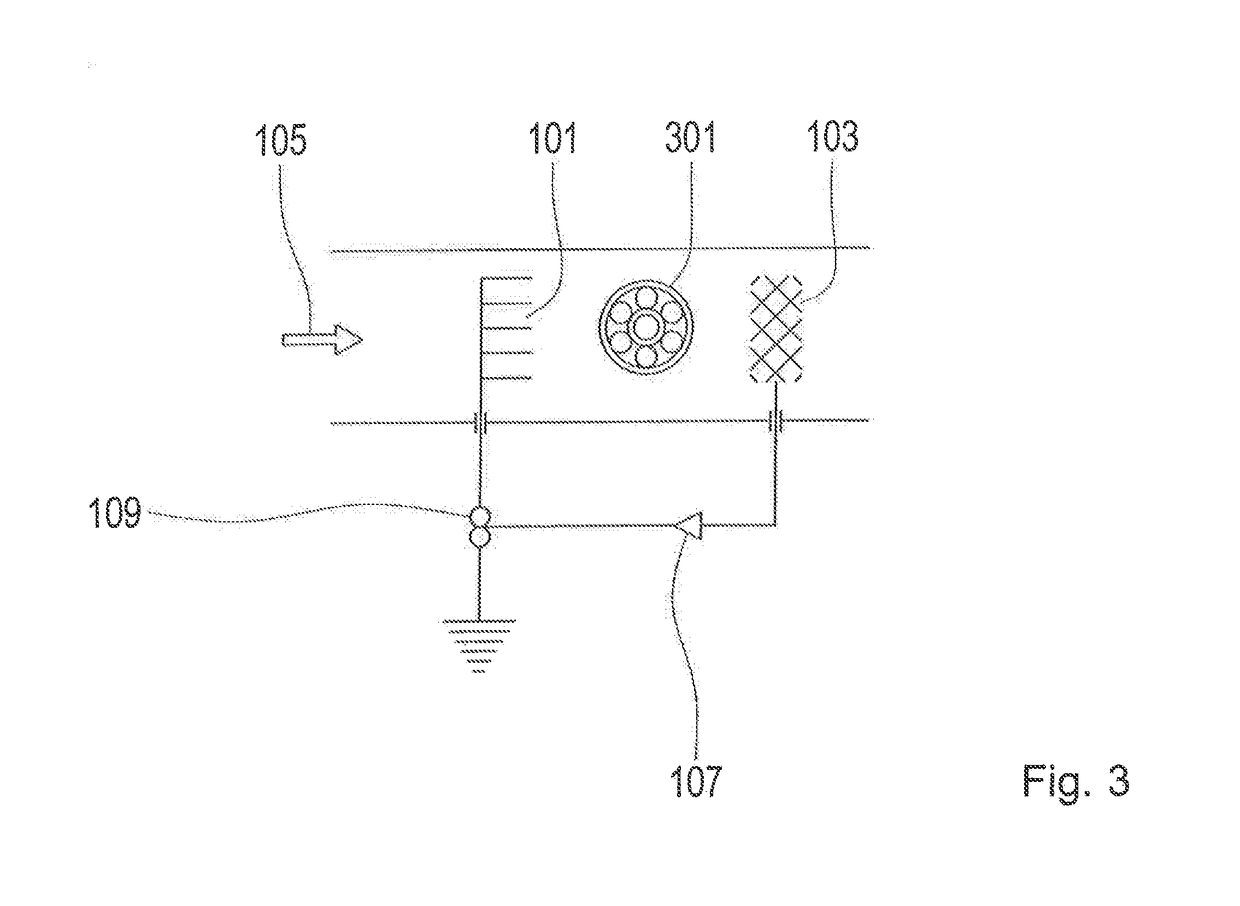Neutralization of charged lubricant
a technology of charged lubricant and neutralization arrangement, which is applied in the direction of instruments, mechanical equipment, material analysis, etc., can solve the problems of bearing damage, decarburization and sparking, and the solution known from the prior art is not suitable for eliminating currents
- Summary
- Abstract
- Description
- Claims
- Application Information
AI Technical Summary
Benefits of technology
Problems solved by technology
Method used
Image
Examples
Embodiment Construction
[0036]FIG. 1 shows a first electrode 101 and a second electrode 103. The first electrode 101 has a plurality of spikes. The second electrode 103 is in the form of a grid structure.
[0037]The two electrodes 101, 103 are arranged in a lubricant flow 105 in such manner that between the electrodes 101, 103 and the lubricant, a charge transfer can take place.
[0038]The first electrode 101 is electrically connected to a charge amplifier 107. This makes it possible to measure the charge of the liquid flowing past the second electrode 103.
[0039]Depending on the charge measured, the first electrode 101 has a voltage applied to it. For that purpose the first electrode 101 is electrically connected to a voltage generator 109.
[0040]Both the charge amplifier 107 and the voltage generator 109 are grounded.
[0041]In FIG. 1 the first electrode 101 is positioned downstream and the second electrode 103 upstream. An inverse arrangement is shown in FIG. 2, in which the first electrode 101 is arranged upst...
PUM
| Property | Measurement | Unit |
|---|---|---|
| voltage | aaaaa | aaaaa |
| electric voltage | aaaaa | aaaaa |
| electrically | aaaaa | aaaaa |
Abstract
Description
Claims
Application Information
 Login to View More
Login to View More - R&D
- Intellectual Property
- Life Sciences
- Materials
- Tech Scout
- Unparalleled Data Quality
- Higher Quality Content
- 60% Fewer Hallucinations
Browse by: Latest US Patents, China's latest patents, Technical Efficacy Thesaurus, Application Domain, Technology Topic, Popular Technical Reports.
© 2025 PatSnap. All rights reserved.Legal|Privacy policy|Modern Slavery Act Transparency Statement|Sitemap|About US| Contact US: help@patsnap.com



